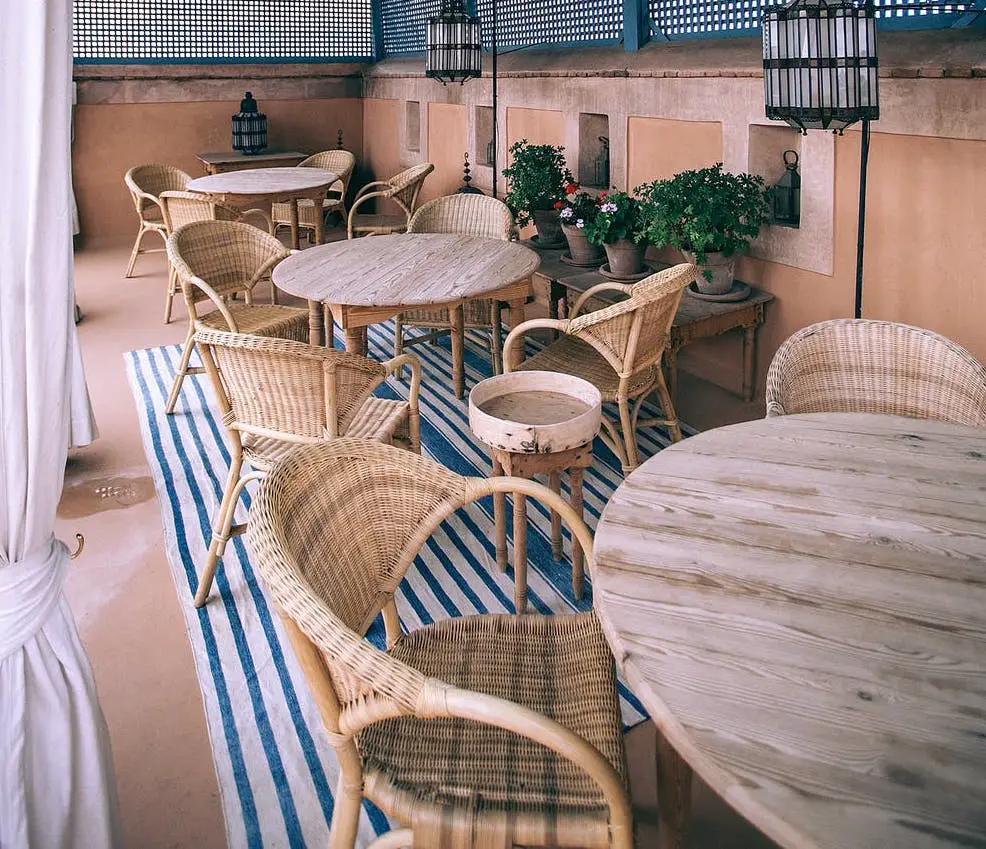Outdoor balconies, patios, porches, and pavements are often underused by restaurant managers, especially in summer and spring, when they can increase the appeal and coverage. Besides, with suitable heaters and covers, they can provide an additional restaurant searing on busy days all-year-round. Here are some cost-effective design tips for capitalising on your restaurant’s outdoor space.
Create shade
Your patio needs to be equipped with awnings, umbrellas, or shade sails to protect your customers from the harsh sun. While there will always be guests who like to dine in the hot sun, most of your patrons will prefer some kind of shade. Several umbrella varieties are perfect for restaurant patios, such as cantilever umbrellas which are fixed on the wall or have stalks that don’t interrupt the tablespace and the seating area. There are even pole-less umbrellas, which are also easier to store in winter. A retractable awning can keep your patio in shade during the day, and be folded back for stargazing dinner in the evening.
Choose the right furniture
The kind of furniture you choose for your restaurant patio needs to be waterproof, easy to move, and easy to stack. In a nutshell, it needs to be both functional and comfortable. Tables and chairs should be durable to withstand variable weather, as even with awnings, your furniture is outside for the best part of the day. For security reasons, you’ll probably be stacking the patio furniture inside when the restaurant is closed, so it has to be lightweight and easy to move. Consider adding furniture pads to the bottom of the legs to protect your floor if the furniture is often moved inside and out. Finally, try to match the style of your furniture with your restaurant interior. Whether you have a French-influenced bistro-style café or a rustic traditional eatery, choose furniture that represents your menu and your image.
Re-design the patio layout
While patios are perfect for outdoor dining, chances are you’ll have to make a few adjustments, before you can furnish it with furniture and everything else it needs to become an extension of your indoor restaurant space. You can use it strictly for seating and dining, or make additions that create an inviting and interactive atmosphere. For example, a part of it can become a cosy lounge with fire-pits and couches, or a designated space for hosting house bands.
In either case, if you need to change the layout of the patio, consider using polished concrete floors, which are durable, easy to maintain and can take a variety of outdoor floor covers, while instantly upscaling the look of your alfresco dining area. This will create the perfect base for adding a marvelous Miss Amara HK carpet that will add style and coziness to your patio. Adding atmospheric elements to the patio may reduce the number of people you can seat, but creates a memorable experience that your restaurant will soon become famous for.
Use decorative lighting
Outdoor lighting design has an important role in any restaurant patio. Apart from inviting customers inside, lighting is often added as an afterthought. However, it’s essential for the al-fresco dining ambience you want to create. Without careful planning, you can easily end up with some tables being unnaturally over lit, while the ones on the side-lines stay dark. When designing the outdoor lighting, make sure to highlight the architectural features of your building, illuminating any signage or accent features. While string lights and lanterns help create a romantic ambience, functional outdoor lights increase the security when you’re closed for business.
Make sure to include greens
There’s hardly a more inviting thing than an outdoor dining space that is lush with foliage. Apart from great food and nice weather, it’s the natural element that makes outdoor dining enjoyable. Probably the easiest and the most effective way to achieve this is to introduce large potted plants, or train climbers to creep around a pergola or gazebo.
Greenery has a high ROI, as every plant you bring improves the visual appearance of your restaurant and increases the chances of attracting guests to your patio. Besides, foliage in planters can improve privacy between dining spaces and even act as a screen between a public walkway and your outdoor dining area.
In the summer, people tend to dine later in the evenings, so in addition to having an inviting patio area, you may have to extend your kitchen hours. Your chef can even develop a special late-night menu, featuring special wines, beers, and cocktails. Summer nights also tend to get chilly, so consider adding a few propane heaters and guest blankets.
